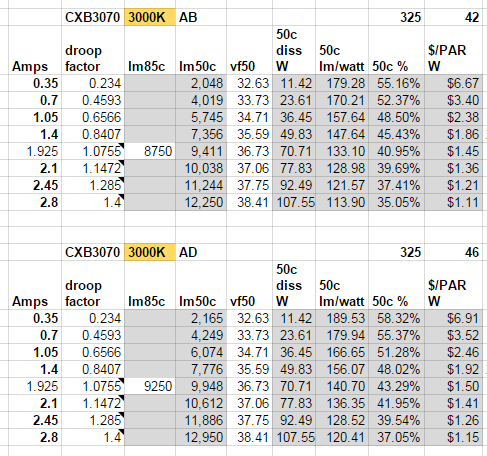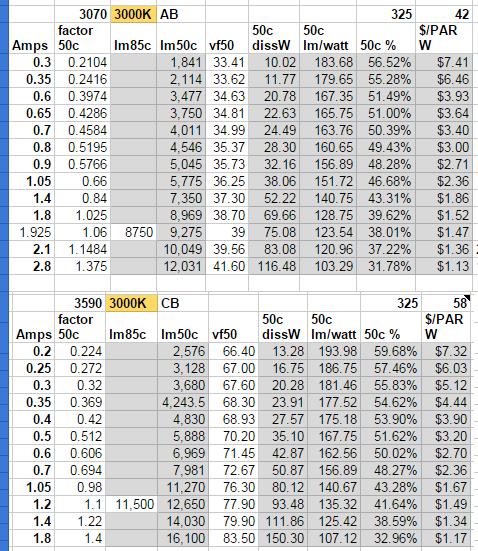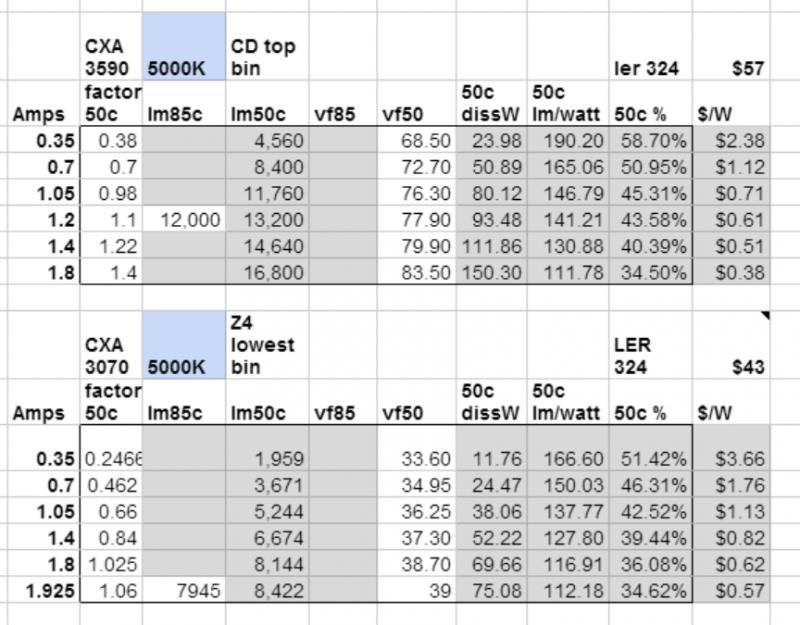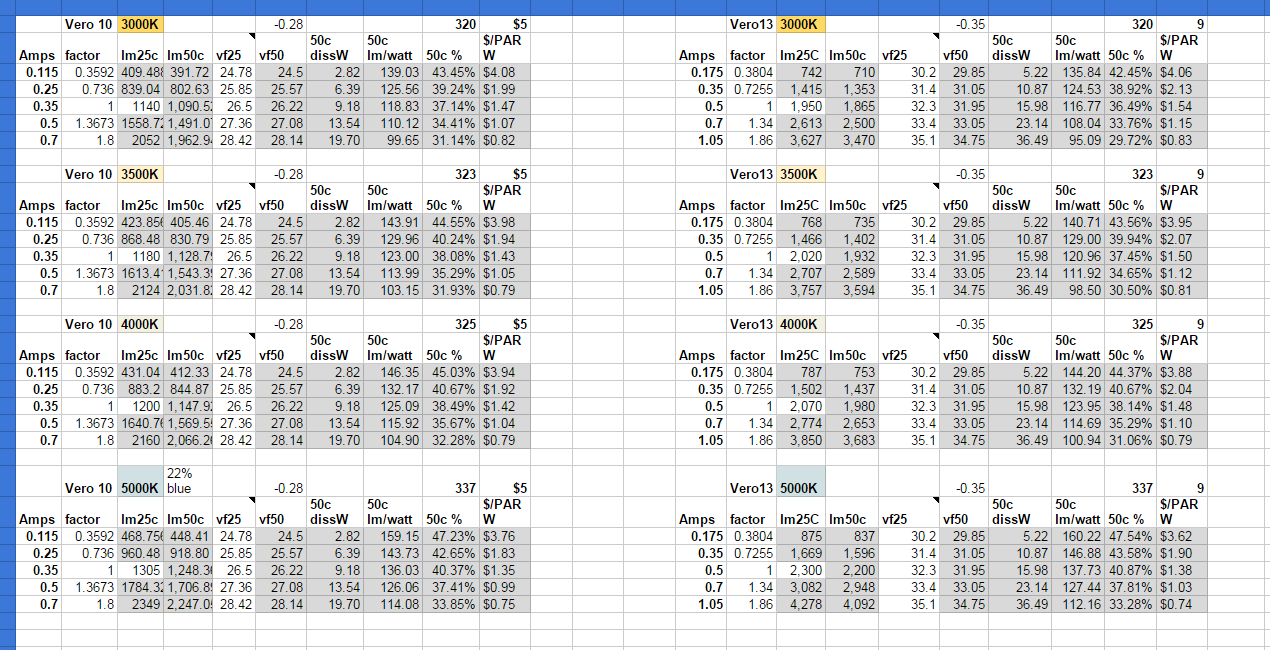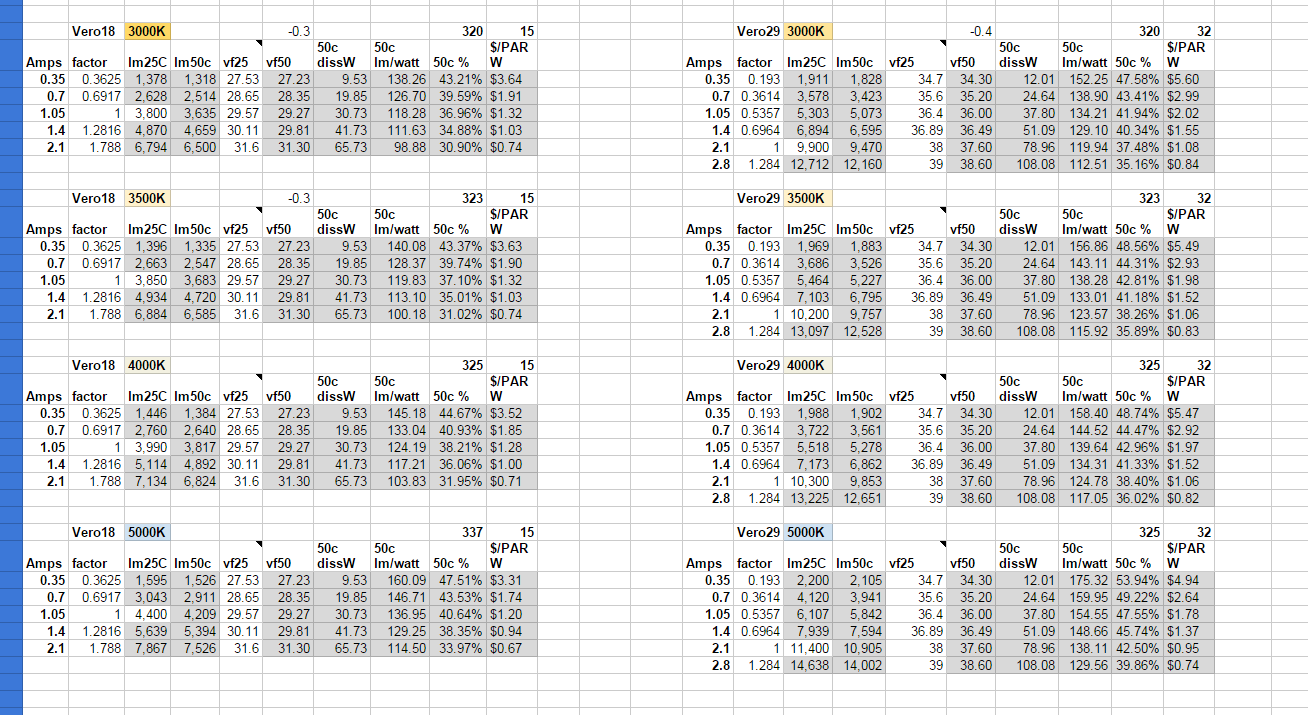nogod_
Well-Known Member
Tracking down Supras spreadsheets can be a pain. Lets all work to organize this info in a way that is slightly less caveman and less of a timesuck than this forum already is.
Post spreadsheets here!
Ignore the price/Parwatt as the prices of COBs are always changing! These tools are for calculating efficiency only; you determine your value based on what price you are paying for your COBs! Hope that clears everything up for anyone that is confused!
Also, please save the comments for another thread so we can keep this thing lean and sexy!
And lastly, thanks again @SupraSPL
Here are some other tools:
Cree PCT
Post spreadsheets here!
Ignore the price/Parwatt as the prices of COBs are always changing! These tools are for calculating efficiency only; you determine your value based on what price you are paying for your COBs! Hope that clears everything up for anyone that is confused!
Also, please save the comments for another thread so we can keep this thing lean and sexy!
And lastly, thanks again @SupraSPL
Here are some other tools:
Cree PCT
Last edited:

